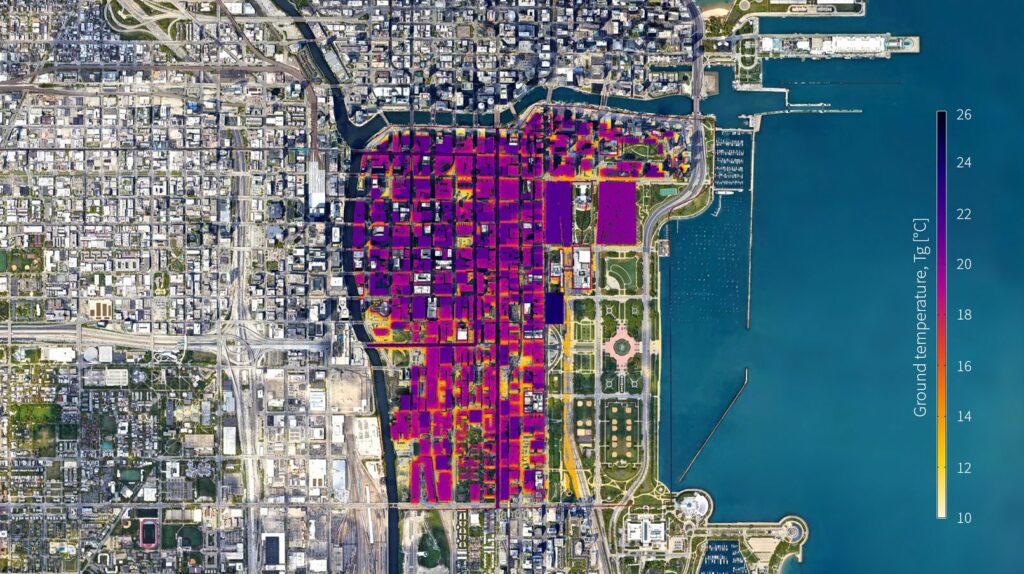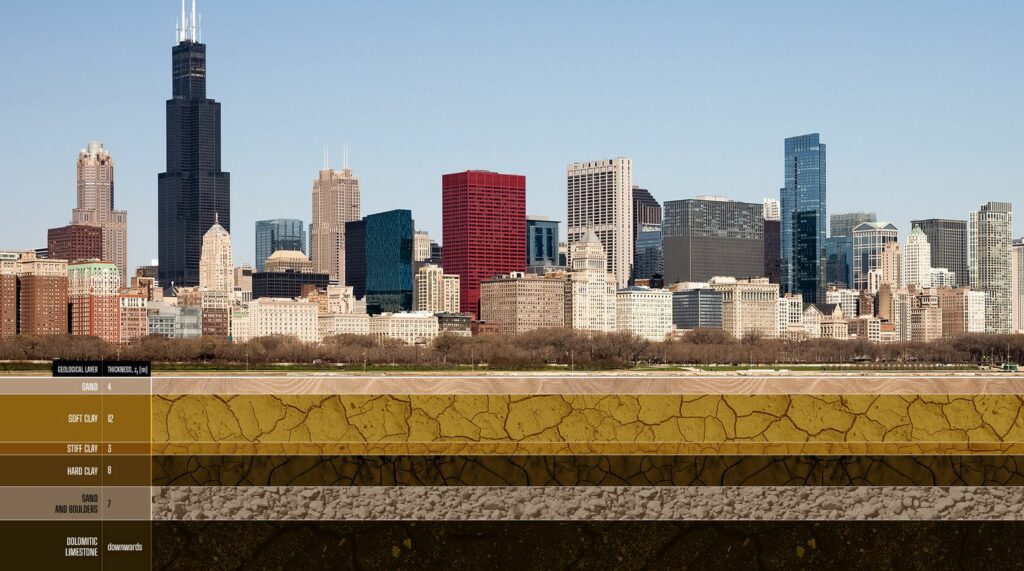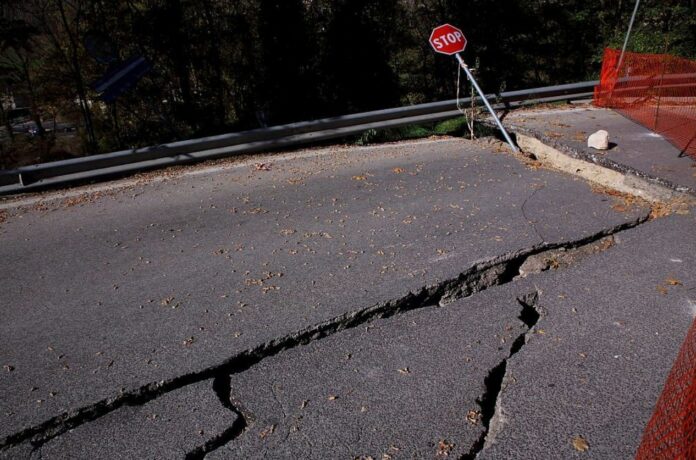“Things are sinking very slowly” and it “is common to nearly all dense urban areas worldwide.”
If you think your basements, parking garages, tunnels, and train, all of these facilities are safer than being on ground in open, think again.
Beneath the bustling urban landscapes of our major global cities lies a hidden danger, a “silent hazard” that our buildings were never designed to confront.
In a groundbreaking study conducted by Northwestern University, the link between underground climate change and the shifting ground beneath urban areas has been established for the first time.
As temperatures rise, the ground undergoes deformation. This phenomenon leads to excessive movement (expansion and contraction) of building foundations and the surrounding soil, causing cracks and ultimately compromising the long-term performance and durability of structures.
Scientists also suggest that previous instances of building damage might have been a consequence of these rising temperatures, and they anticipate that such issues will persist in the years to come.
While the rising temperatures pose a threat to our infrastructure, scientists also perceive them as a potential opportunity. By harnessing the waste heat emitted from underground sources such as subterranean transportation systems, parking garages, and basement facilities, urban planners could mitigate the impact of underground climate change and utilize this heat as an untapped thermal energy resource.
The findings of this study, were published today in Communications Engineering, a Nature Portfolio journal, represent the first quantification of ground deformations caused by subsurface heat islands and their effects on civil infrastructure.
Alessandro Rotta Loria, leading the study at Northwestern University, remarked, “Underground climate change is a silent hazard. The ground is deforming as a result of temperature variations, and no existing civil structure or infrastructure is designed to withstand these variations. Although this phenomenon is not dangerous for people’s safety necessarily, it will affect the normal day-to-day operations of foundation systems and civil infrastructure at large.
“Chicago clay can contract when heated, like many other fine-grained soils. As a result of temperature increases underground, many foundations downtown are undergoing unwanted settlement, slowly but continuously. In other words, you don’t need to live in Venice to live in a city that is sinking — even if the causes for such phenomena are completely different.”
Alessandro Rotta Loria is an assistant professor of civil and environmental engineering at Northwestern’s McCormick School of Engineering.
What does “underground climate change” entail?
In numerous urban regions worldwide, an alarming warming of the ground is occurring due to the continuous diffusion of heat from buildings and subterranean transportation systems. Previous studies have revealed that the shallow subsurface beneath cities experiences a temperature increase of 0.1 to 2.5 degrees Celsius per decade.
Termed “underground climate change” or “subsurface heat islands,” this phenomenon has been associated with ecological issues such as groundwater contamination, as well as health concerns including asthma and heatstroke. However, the impact of underground climate change on civil infrastructure has remained largely unexplored and poorly understood.
Alessandro Rotta Loria explains, “If you think about basements, parking garages, tunnels and trains, all of these facilities continuously emit heat.
“In general, cities are warmer than rural areas because construction materials periodically trap heat derived from human activity and solar radiation and then release it into the atmosphere. That process has been studied for decades. Now, we are looking at its subsurface counterpart, which is mostly driven by anthropogenic activity.”

Chicago: A Living Laboratory for Research
Over the past few years, Rotta Loria and his team have established an extensive wireless network comprising more than 150 temperature sensors throughout Chicago’s Loop area. These sensors were strategically placed both above and below ground, including in building basements, subway tunnels, underground parking garages, and subsurface streets such as Lower Wacker Drive. As a point of comparison, additional sensors were buried in Grant Park, an open green space situated along Lake Michigan, away from buildings and subterranean transportation systems.
The data collected from this wireless sensing network revealed a noteworthy disparity in temperatures between the underground areas of the Loop and Grant Park. Underground temperatures beneath the Loop were consistently found to be around 10 degrees warmer than those beneath Grant Park. Moreover, air temperatures within underground structures could reach up to 25 degrees higher than the undisturbed ground temperature. This thermal diffusion places substantial stress on materials that undergo expansion and contraction in response to temperature fluctuations.
“We used Chicago as a living laboratory, but underground climate change is common to nearly all dense urban areas worldwide,” adds Rotta Loria. “And all urban areas suffering from underground climate change are prone to have problems with infrastructure.”
“Things are sinking very slowly”
After collecting temperature data for three years, Rotta Loria built a 3D computer model to simulate how ground temperatures evolved from 1951 (the year Chicago completed its subway tunnels) to today. He found values consistent with those measured in the field and used the simulation to predict how temperatures will evolve until the year 2051.
Rotta Loria also modeled how ground deforms in response to increasing temperatures. Whereas some materials (soft and stiff clay) contract when heated, other materials (hard clay, sand, and limestone) expand.
According to the simulations, warmer temperatures can cause the ground to swell and expand upward by as much as 12 millimeters. They also can cause the ground to contract and sink downward — beneath the weight of a building — by as much as 8 millimeters. Although this seems subtle and is imperceptible to humans, the variation is more than many building components and foundation systems can handle without compromising their operational requirements.
“Based on our computer simulations, we have shown that ground deformations can be so severe that they lead to problems for the performance of civil infrastructure,” warns Rotta Loria. “It’s not like a building will suddenly collapse. Things are sinking very slowly. The consequences for serviceability of structures and infrastructures can be very bad, but it takes a long time to see them. It’s very likely that underground climate change has already caused cracks and excessive foundation settlements that we didn’t associate with this phenomenon because we weren’t aware of it.”

Harnessing Heat Resources
The majority of modern buildings, designed by urban planners and architects prior to the emergence of underground climate change, were not equipped to handle the temperature variations experienced today. However, compared to structures from earlier eras like the Middle Ages, contemporary buildings are expected to fare better.
“In the United States, the buildings are all relatively new,” notes Rotta Loria. “European cities with very old buildings will be more susceptible to subsurface climate change. Buildings made of stone and bricks that resort to past design and construction practices are generally in a very delicate equilibrium with the perturbations associated with the current operations of cities. The thermal perturbations linked to subsurface heat islands can have detrimental impacts for such constructions.”
Looking ahead, Rotta Loria suggests that future planning strategies should incorporate geothermal technologies to capture waste heat and utilize it for building heating purposes. Planners can also focus on installing thermal insulation in both new and existing buildings to reduce the amount of heat entering the ground.
“The most effective and rational approach is to isolate underground structures in a way that the amount of wasted heat is minimal,” Rotta Loria adds. “If this cannot be done, then geothermal technologies offer the opportunity to efficiently absorb and reuse heat in buildings. What we don’t want is to use technologies to actively cool underground structures because that uses energy. Currently, there are a myriad of solutions that can be implemented.”
Image Credit: Matteo Nardone/Pacific Press/LightRocket via Getty Images
